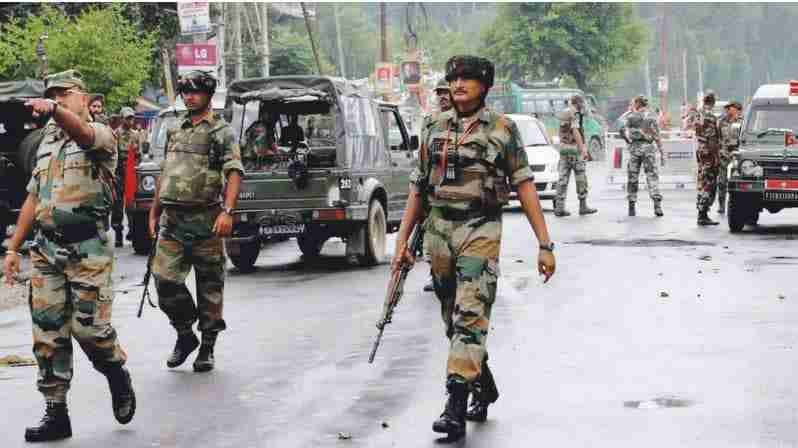A year after the abrogation of Article 370 and 35A—which removed the special status of the former state of Jammu and Kashmir—the jury is still out on whether abrogation per se has achieved many of its stated aims: to provide good governance, to put an end to corruption – as the Home Minister had indicated – and to strengthen our responses in countering the Pakistan sponsored militancy. Whereas it is hard to ascertain what gains have been made in governance since the lockdown hasn’t allowed any activity in the public space (though there are claims of infrastructure development), gains in the latter two aspects have been more noticeable.
While most experts are of the view that the removal of Article 370 – and the state of siege that followed, wasn’t a magic wand to put an end to Pakistan’s proxy war, but in the same breath, they do concede that the security forces have been freed from the harassment of pro-militant mobs to get on with the many requirements of an effective counter-terrorism operation.
Even though there has been considerable pressure on the Union Government from various quarters, especially expressed in the print media, to allow the people of J&K relief from the clampdown after August 5 of last year, these very restrictions after the abrogation of article 370 and 35A, have also curtailed the flow of funds to those who have in the past financed the stone-throwing protestors. The critics of the clampdown have been visibly silent on this aspect.
Freedom of expression cannot certainly allow the stoning of Central Armed Police (CAPF) personnel. More importantly, these restrictions have freed the CRPF personnel (who had faced the brunt of stone-throwing mobs and had a few thousand casualties), to get on with their primary task of countering terrorism and militancy.
Proxy war and Article 370
While most experts are of the view that the removal of Article 370 – and the state of siege that followed, wasn’t a magic wand to put an end to Pakistan’s proxy war, but in the same breath, they do concede that the security forces have been freed from the harassment of pro-militant mobs to get on with the many requirements of an effective counter-terrorism operation. A look at the official figures shows that there has been a visible fall in youngsters recruited by militant groups (based on reports by the police) and a clear rise in militants eliminated, compared to the previous year.
For Pakistan, its claim on Kashmir and its control over POJ&K remains its best binding adhesive. Thus, the abrogation of Article 370 gave it another reason to raise the anti-India chants.
In fact, anyone familiar with internal security duties would confirm that it is easy to pick up anti-national elements when the security forces aren’t distracted by stone-throwing or howling mobs. Those who’ve served in the security forces in the Valley have also confirmed that good social media connectivity had allowed mobs to gather in a few minutes whenever the security forces were sighted in a cordon and search operation.
Hence the continuing restriction on the revival of a 4G network in the Valley. Yes, local businesses have suffered, but it is worth a study to see whether the absence of a 4G network is more harmful to traders or is the complete lockdown that is enforced, each time there is a terrorist attack?

CHINA-PAK NEXUS
Furthermore, those who have argued that had it not been for the abrogation of Article 370, Pakistan and China wouldn’t have stepped up their hostile actions, are either myopic or unaware of the strategic aims of both our hostile neighbours. Pakistan’s politicians and its military men would be left rudderless without their anti-Indian assertions.
It helps their politicians to counter questions about their inability to address the multiple challenges of governing Pakistan; and for their military men, their enmity with India allows them to eat the lion’s share of Pakistan’s budgets. But it is China that is clearly the bigger challenge for India, with their intrusions and a military build-up on the LAC that has clearly stumped the Indian government. It has been argued that having created the Union Territory of Ladakh and the reassertion of claims to the Chinese held territories in Aksai Chin and the Shaksgam Valley in POJ&K, has got Beijing’s back up.
Pakistan’s politicians and its military men would be left rudderless without their anti-Indian assertions.
Along with the Pakistani’s – who tried hard to raise the pitch against India’s alleged human rights abuses, but had few takers, overseas – the Chinese decided to launch their diplomatic and military offensives against India, first at the UN and then on the ground in POK, by undertaking an air exercise called Shaheen VIII in 2019, in the Chinese city of Hotan in Xinjiang, close to the Sino-Indian frontier in the state.
Both the Pakistani PAF and the Chinese PLAAF had also used the Skardu airbase in Gilgit Baltistan, which is a part of POJ&K. This was well before the Chinese build-up and intrusions in Aksai Chin near Ladakh. A major focus area for the PAF during these exercises was to extensively evaluate the operational capability of their fighter aircraft fleets and practice close combat and beyond visual range air melees with these aircraft.

And thereafter, in early January 2020, China and Pakistan executed a nine-day naval exercise called Sea Guardian VI. This exercise included warlike air defence systems, anti-missile technology, anti-submarine warfare capabilities, and live-fire and joint marine training drills.
Did the Indian security establishment even attempt to join these dots? Or did they miss the message that these initiatives had carried? Were they preparing the ground for a conflict over Kashmir? And had the assertions by India that New Delhi would be willing to assert its claims over POJ&K and Aksai Chin by diplomatic means and more, to address the unsettled legacies of the Nehru era, added to this China-Pak assertiveness?
For Pakistan, its claim on Kashmir and its control over POJ&K remains its best binding adhesive. Thus, the abrogation of Article 370 gave it another reason to raise the anti-India chants. But for China, their territorial incursion east of Ladakh is in keeping with Beijing’s strategy to control the waters in that region. Global warming and glacial melt have accelerated in the western Himalayas and the Karakoram ranges (which run through Aksai Chin). This glacial melt is going to cause an increase in the water surging through the Galwan River, the Shyok River, the Chang Chemo River and the Nubra River that ultimately merge with the Indus.
For China, their territorial incursion east of Ladakh is in keeping with Beijing’s strategy to control the waters in that region.
The Chinese plan to take advantage of this surge and are constructing the Bunji and Diamer Bhasha dams at Skardu and Gilgit in POJ&K at a cost of nearly USD 14 billion. They want to enforce a secure solution to ensure the uncontested flow of this surge of water to these dams. In effect, they want territorial jurisdiction over the parts of Ladakh where these rivers flow.
In fact, it is the waters of the erstwhile state of Jammu and Kashmir (and now the UT of Ladakh) that could become a major reason for a future conflict. It is for this reason that an agreed formal demarcation of our boundaries with China in particular – and not just claims based on maps we publish – should become the goal of any future agreement, at least with China.

